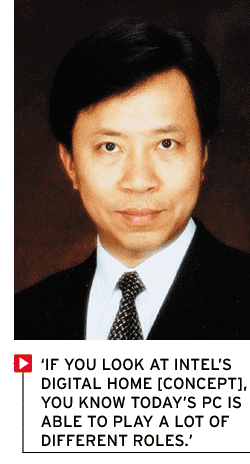Flexibility A Key Driver

Published for the Week Of October 4, 2004

CRN:
What is the state of the white-box market today?
SU: Because of competition from [Hewlett-Packard] and Dell, they keep driving the prices down. At the same time, they also impact white-box competitiveness. Both of them are growing market share so, of course, the white-box market share goes down. [Also], in the whole PC market, the percentage of notebook PCs is increasing. In North America, white-box notebooks have much less room to survive. With a desktop, you can add value. But notebooks, because they are small, it means that it becomes more of a commodity. For service, it’s very easy to swap [parts]. For HP and Dell, with their resources, it is very easy to do that. But for whitebooks, it’s very hard because it requires a lot of resources. Also, there’s less flexibility, which means HP and Dell can do mass production to drive down the cost, which is another reason why the white-box notebook market share is going down. From an overall point of view, the white-box market is getting tougher. But there is still a lot of room for white-box players to add value.
CRN: For example?
SU: A lot of people are talking about the small-form-factor PC, right? The small-form-factor PC, as a matter of fact, is not a standard form factor. Dell and HP have a slim PC, a small-sized PC. But they don’t have a small-form-factor PC, or a cube PC. There are a lot of areas that fit a small-form-factor PC’s features. For example … Intel and Microsoft are pushing the so-called digital home. Microsoft’s Media Center. You tell me—notebook, desktop, small-form-factor PC—which has a better fit in the digital home? Of course, the answer is small-form-factor PC. … The most important question is, are you able to find a market which you can serve the best? And, as long as you’re talking about flexibility, then the white-box market has an opportunity.
CRN: So it’s not so much of a mass market anymore in terms of the biggest opportunities for custom systems?
| AD | |
|---|---|
| id | unit-1659132512259 |
| type | Sponsored post |
SU: If you’re talking about a mid-tower and a standard configuration, maybe Dell is the one. Their price is so aggressive, it’s very hard to compete with Dell. But if you’re talking about a special application PC, for example, the media PC, the digital home PC, the entertainment PC … there is no clear, fixed definition. That means flexible.For example, a media PC from your company emphasizes the digital media [and] the DVD player with whatever this and that together. But [another] company’s media PC emphasizes picture editing or whatever. So it’s become very flexible. [There are] a lot of different areas where you can show the specific feature or selling point of your media PC or entertainment PC. ...What’s important is, in the white-box market, if you just want to build a standard desktop system or a standard notebook system to compete in the market, in North America it’s hard [for you] to compete with HP and Dell. But if you go to a special niche market, it’s a different story.
CRN: How do suppliers such as yourself help system builders get into these flexible systems and markets?
SU: Engineering services. To get into those markets, [system builders] require special drivers, special image files, special components. You have to put them together, ensure the compatibility. That is where the component supplier is able to help the system integrator. … If you want to add some special feature, you have to ensure that that special feature is easy to use and has perfect compatibility.
CRN: What are some things component suppliers are doing to change components to meet some of these needs?
SU: As long as they have a certain volume, whenever they want to customize the component, we do that for them. They’re going to customize the VGA, the motherboard, the BIOS drivers. We do that for them as long as they have volume.
CRN: What kind of volume are we talking about?
SU: Not really a lot. Probably 2,000 pieces a month.
CRN: How about for the smaller system builders?
SU: Then they have to buy standard components. They have to put software and hardware together as part of their customization.
CRN: So people need to specialize?
SU: Absolutely. From, say, 1999 to 2003, most of the added value in the white-box market was in service. Local service, local RMA, local assembly, local this and that. Starting from 2004, we see on top of local service another important area for adding value is the product itself because you can do some customization. Today, there is no standard for a so-called media PC, right? You tell me, what is a media PC? Also, today we talk about the digital home, with everything linked together. So the PC may be bundled with wireless or data-compression technology, and so on. If you look at Intel’s digital home [concept], you know today’s PC is able to play a lot of different roles.
CRN: What about those that want to build standard PCs?
SU: For local markets, there will always be some customers who trust and want to buy a customized PC from the store they know. But those markets are getting smaller. ... So I firmly believe, for a white-box player, you have to find the areas you are very good in, and then focus on those areas where the big players, HP and Dell, cannot provide the best service.